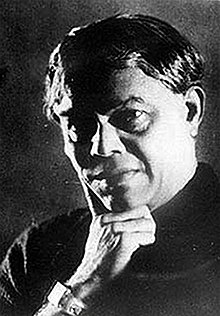T.P.KAILASM:-Born 29 July 1884
Mysore, India Died 1946
Bangalore, Karnataka, India Occupation Playwright, Geologist Genre Fiction, humor, comedy Parents T Paramasiva Iyer (father)
Kailasam was born in a Tamil Iyer brahmin family in Mysore, Kingdom of Mysore (now Karnataka). He belonged to the Mangudi Brahacharanam subsect. His father, T Paramasiva Iyer, was a revenue collector in the Government of Mysore who later became the Chief Justice of Mysore High Court.
| Born | 29 July 1884 Mysore, India |
|---|---|
| Died | 1946 Bangalore, Karnataka, India |
| Occupation | Playwright, Geologist |
| Genre | Fiction, humor, comedy |
| Parents | T Paramasiva Iyer (father) |
Karna as the Voice of the Subaltern
In the epic Indian tale of the Mahabharata, Karna stands out as a compelling character who can be seen as the voice of the subaltern. The term "subaltern" refers to individuals or groups in society who are marginalized, oppressed, or excluded from positions of power and privilege. Karna's story embodies many aspects of the subaltern experience and serves as a poignant representation of social injustice, identity, and resilience.
- Social Outcast and Birth:-
Karna's story begins with his birth to Queen Kunti, who was not married at the time. Fearing societal judgment, she set her newborn son afloat in a river, leading him to be adopted by a low-caste charioteer. Karna's birth as a result of a hidden affair between a royal and a low-caste individual immediately places him in the margins of society. His identity is concealed, and he is denied the privileges associated with his royal lineage.
- Struggles of Identity:-
Throughout his life, Karna grapples with his identity. He is well aware of his royal
- Friendship and Loyalty:-
Karna's loyalty to Duryodhana, the eldest Kuru prince, is a defining aspect of his character. Duryodhana, too, is often marginalized within the Kuru clan due to his questionable ethics and ambitions. Karna's unwavering friendship with Duryodhana illustrates the subaltern's willingness to align with those who are also excluded from the mainstream. It symbolizes the bonds that can form among marginalized individuals in the face of shared adversity.
- Denied Opportunities:-
We can easily realize after watching this video that Karna wants to fights but just because he was not kshatriya he didn't fights with them. Also Karna's skills as an archer and warrior are unmatched, yet he is repeatedly denied opportunities to showcase his abilities. When he seeks to participate in the grand tournament held by the Kuru clan, he is initially rejected due to his low birth. This mirrors the barriers that many subaltern individuals face when they attempt to break free from societal constraints and demonstrate their talents.
- Social Discrimination:-
Karna faces constant discrimination and humiliation from those who are part of the Kuru hierarchy. His low-caste origin is frequently used to degrade him, reflecting the prejudice and caste-based discrimination that persist in many societies. Karna's experiences of humiliation resonate with the daily struggles of subaltern individuals who confront prejudice and discrimination based on their social status.
- Tragic Destiny:-
Karna's fate is marked by tragedy. Despite his exceptional skills and noble character, he is destined to suffer and eventually die on the battlefield. His tragic end reflects the unjust outcomes that can befall subaltern individuals who are denied opportunities and rights solely due to their social standing.
- Legacy and Representation:-
In conclusion, Karna's character in the Mahabharata serves as a powerful representation of the subaltern. His experiences of social exclusion, identity struggles, loyalty, discrimination, and tragic destiny reflect the challenges faced by marginalized individuals in society. Karna's enduring legacy as a heroic figure underscores the importance of recognizing the voices and stories of the subaltern in our collective narratives, highlighting their resilience and the need for social justice and inclusivity.
Thank you for visiting my blog!!!








No comments:
Post a Comment